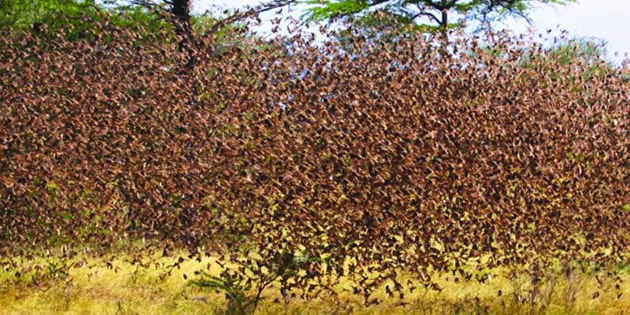Quelea birds threaten winter wheat crop

Sifelani Tsiko
Agric & innovations Editor
Quelea flocks have appeared in Matabeleland North and are hitting sorghum and peal millet fields, warns the Plant Quarantine and Plant Protection Research Services Institute.
Shingirai Nyamutukwa, head of the institute, said yesterday that his organisation and the National Parks and Wildlife Authority had teams on the ground working to control and manage the birds, a tiny species that flocks in huge numbers and so becomes a pest.
“We have teams from our institute and the National Parks and Wildlife Authority that are now involved in quelea bird management in roosting or breeding sites especially in reeds and acacia trees in the Pandamatenga area of Matabeleland North. The birds mostly prefer annual grass seeds but when not available, small grain cereal crops become the target.”
Nyamutukwa urged farmers and the public to be vigilant and report any suspicious flocks.
“Chemical control using Queletox is in progress in areas like Pandamatenga which are known to be breeding and roosting sites for quelea birds. Prospects to use falcon birds as biological control are being explored for use in Africa including Zimbabwe. The outbreak of quelea birds is particularly worrying after most farmers got a bumper millet and sorghum crop.
“Quelea birds also pose a big threat to the country’s winter wheat crop particularly in the Middle Sabi area of Chipinge South where marauding quelea birds have been a problem in the past.”
The country’s winter wheat crop is already established and farmers need to be vigilant.
“Farmers must remain alert to quelea birds as well as other pests that include caterpillars (bollworms Helicoverpa armigera), wheat stem borers (Sesamia inferens), rodents and fungal diseases,” Nyamutukwa said. While all these pests contribute to yield losses, more than 95 percent of any wheat damage is due to quelea birds. Small grain farmers also face challenges with quelea birds with experts saying each bird feeds on average 4g of grain a day but when that tiny number is multiplied by the flock sizes, the extent of the damage can be seen.
“A million birds can result in losses exceeding 40 000 tonnes. Damage is excessive when it’s due to large flocks. Management of quelea birds is therefore critical if intended yields are to be realised,” Nyamutukwa said.
Quelea birds were reported to be wreaking havoc in Nyamandlovu and Bubi farming areas in Matabeleland North where they are devouring small grains. Farmers were reported to be having a torrid time clanging metal objects and chasing away the tiny but heavy feasting birds.
The red-billed quelea is a small weaver bird native to sub-Saharan Africa and renowned for its attacks on small-grain crops within Africa. It is the most numerous bird species in the world, with a peak post-breeding population estimated at 1,8 billion. Nomadic super-colonies can grow to millions of birds, making quelea not only the most abundant bird in the world but also the most destructive to cereal grains, especially sorghum and millets as well as wheat, rice and barley.











Comments